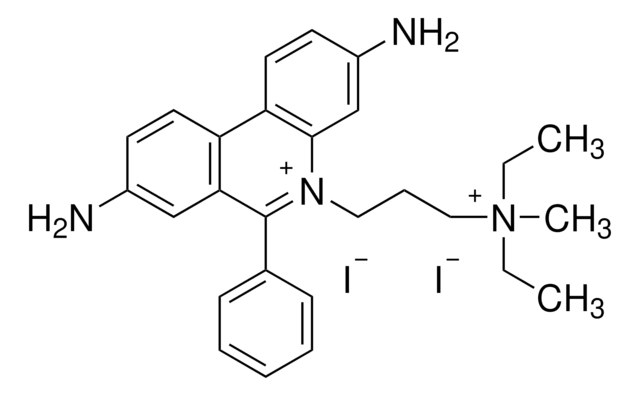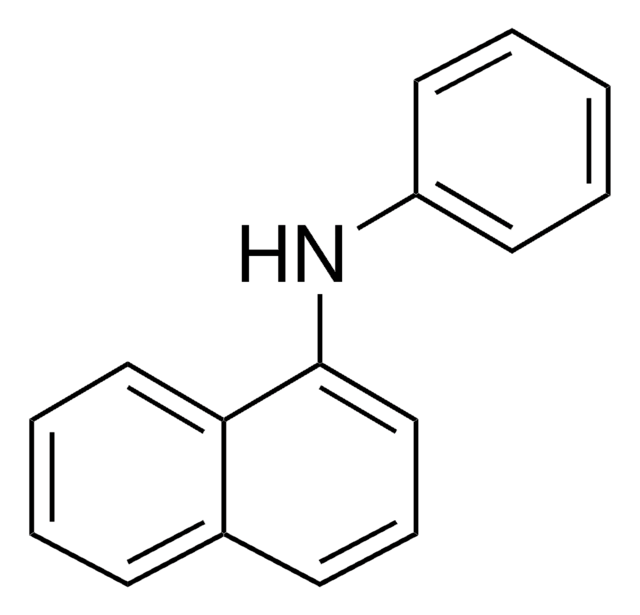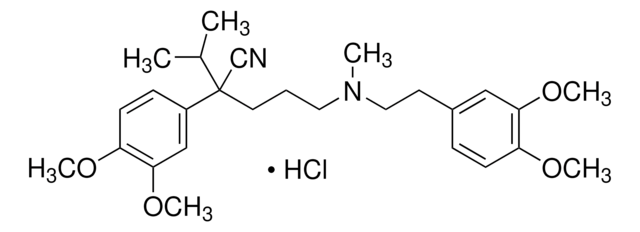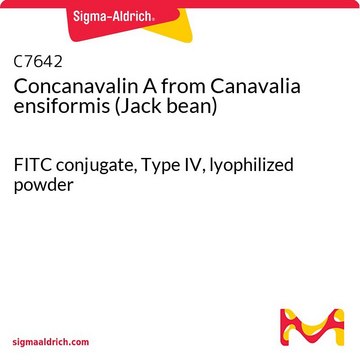D8189
Bis(1,3-dibutylbarbituric acid) trimethine oxonol
≥95% purity (HPLC), powder or solid
Synonym(s):
DiBAC4(3)
Sign Into View Organizational & Contract Pricing
Select a Size
All Photos(1)
Select a Size
Change View
About This Item
Empirical Formula (Hill Notation):
C27H40N4O6
CAS Number:
Molecular Weight:
516.63
MDL number:
UNSPSC Code:
12171500
PubChem Substance ID:
NACRES:
NA.47
Recommended Products
Product Name
Bis(1,3-dibutylbarbituric acid) trimethine oxonol, ≥95% (HPLC)
Quality Level
assay
≥95% (HPLC)
form
powder or solid
technique(s)
titration: suitable
color
orange to dark red
solubility
DMF: soluble
DMSO: soluble
ε (extinction coefficient)
≥90000 at 490-496 nm in methanol
fluorescence
λex 513-519 nm
application(s)
diagnostic assay manufacturing
hematology
histology
Application
Application in high throughput screening.
Bis(1,3-dibutylbarbituric acid) trimethine oxonol has been used for monitoring changes in the plasma membrane potential. It also has applications in high throughput screening.
Biochem/physiol Actions
Bis(1,3-dibutylbarbituric acid) trimethine oxonolis a translational membrane potential dye that is redistributed in the cell as membrane potential changes.
Translational membrane potential dye that is redistributed in the cell as membrane potential changes.
Storage Class
11 - Combustible Solids
wgk_germany
WGK 3
flash_point_f
Not applicable
flash_point_c
Not applicable
ppe
Eyeshields, Gloves, type N95 (US)
Choose from one of the most recent versions:
Already Own This Product?
Find documentation for the products that you have recently purchased in the Document Library.
Customers Also Viewed
Our team of scientists has experience in all areas of research including Life Science, Material Science, Chemical Synthesis, Chromatography, Analytical and many others.
Contact Technical Service








